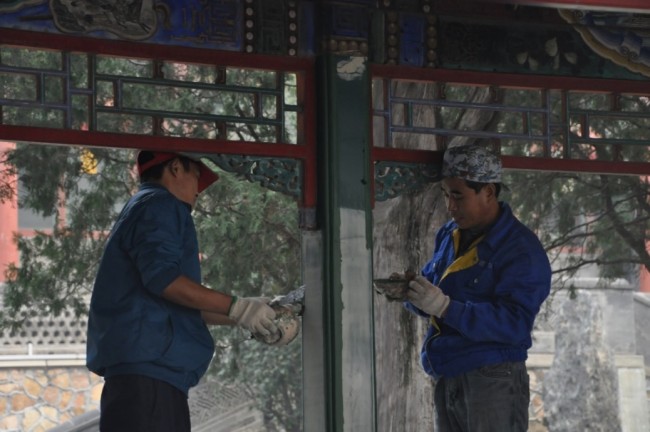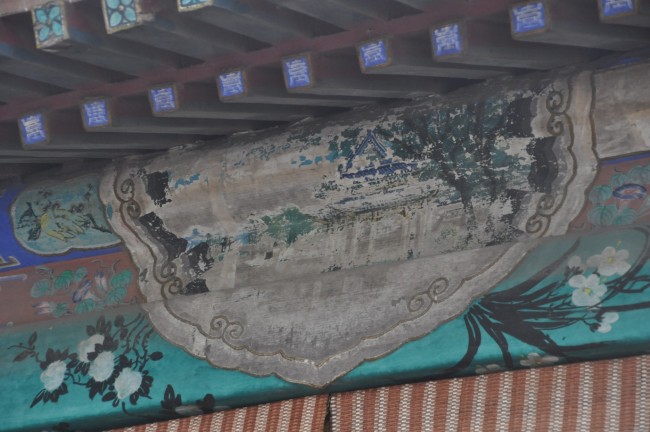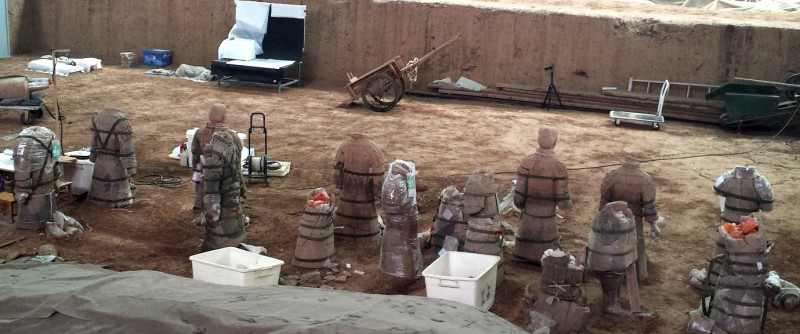What would we say if we heard that the troops from two countries working together were hell-bent on destroying the heritage monuments of a third? In addition to the human lives they took, they destroyed one of the most beautiful groups of buildings in the region, steeped in historical significance. As they did so, they looted fine art treasures to fill the houses of the rich and the museums of the “civilized” world—where they remain. The theft of these treasures caused as much resentment among the descendants of those who lost them as Elgin’s removal of the Parthenon marbles from Athens to Britain. The actions sound like those of the disgruntled Sunni troops of Iraq and Syria in their joint actions, reverting to beheading, blowing up the remains of Palmyra, and selling antiquities to the world market to fund their activities. They also describe the actions of the British and French armies in China in 1860.
One of the British commanders in China was the son of that same Elgin, engaged in a war in which the troops from France and Britain were supposedly trying to free up trade with China by vicious military action—bizarre though that sounds. It was he who was responsible for the destruction of the Summer Palace in Beijing; his troops looted and pillaged the imperial treasures. A much restored version of the Summer Palace is on the UNESCO World Heritage List. Among the features destroyed by the British but now restored is the 728-meter Long Corridor—so long, tourists are told, that it is in the Guinness World Records. In the harsh climate around Beijing, the fabric of the restored corridor requires almost continuous maintenance.

The corridor was decorated with more than 10,000 paintings that have also been reconstructed. They, like the Sydney Harbour Bridge, must be repainted on a regular basis. If the corridor is not original and is constantly renewed, and if the paintings have to be repeatedly restored, we might question the basis for the fame of the material heritage of the Summer Palace as it is shown to tourists. Is it anything more than a tourist attraction, a theme park of the Ming Dynasty, like that replica recently constructed 1,000 kilometers from Beijing where equivalent structures and paintings can be enjoyed by even larger masses of tourists?

What we are talking about here is the “old man’s spade.” You know the story: the old man used to say that he’d had only one spade all his life, and he had only changed the handle five times and the blade twice. Is the old man saying anything other than that he is just a silly old man? This blog considers the question of the authenticity of the Summer Palace, one of the jewels of Chinese World Heritage. Is it any more authentic than the old man’s claim to have had only one spade? The issues relate equally to the much reconstructed Great Wall or the much renovated Forbidden City. Even the Terracotta Warriors have to be reconstructed before they can be displayed in their astonishing variety.

All over the world, important heritage places (such as the Washington Elm, where George Washington supposedly received his command, on Cambridge Common in Massachusetts) have to be renewed (the original tree died) or they lose their impact as heritage places. Does heritage tend toward theme parks, or is “real” heritage somehow different? This is particularly interesting in the light of a proposal for a park north of Sydney, Australia, where Chinese heritage buildings might be copied but would probably not acquire heritage significance. How important is it, when honoring heritage, to call a spade a spade?
In philosophy, the question of the old man’s spade is known as the ship of Theseus paradox and has been discussed since the time of the pre-Socratic philosophers of Greece (Lowenthal 1989). There is even a version that relates to George Washington’s axe, presumably the one he did or did not use to cut down the cherry tree. The philosophical question turns on the interpretation if the ship carried spare timber for repairs during the voyage, and whether it would be the same ship even if it were completely renewed. Can the old man’s spade (or the ship or the axe) be considered the same one after its history of changes? Various thought experiments have been devised to discuss the relevant options. But whether these thoughts are about the use of the same materials, the way the thing was made, the shape of the thing, or the use to which the thing is/was put, the discussion has centered principally on the essence of the material “thing” rather than the relationship between it and other things, places, or people that surround it. Mike Schiffer (1999) has emphasized this three-way communication between people and things in The Material Life of Human Beings and the centrality to human life of human interactions with materiality. Although heritage values might be related to the (generally material) qualities of the heritage thing or place, the fundamental reason for heritage status of the thing or place is the interactions people have with it.
This quality of the importance of the heritage-bearing people—the consumers of heritage—enables the concept of heritage to extend beyond the material to intangible aspects of culture. The heritage is more than the material thing or place; it is also the narratives and interpretations that people bring to it, or anchor to it. But without the material anchor, who can identify the original or reconstructed parts of the intangible? We could engage in a thought experiment of our own, switching from material cultural heritage to intangible cultural heritage. Beside the ship of Theseus paradox about a materially substantive ship, there is a song of Homer paradox, through which we could debate whether the final (written) version of The Odyssey (whatever it says about ships) was the same as had been originally sung by the first person who called himself (or herself) Homer. By this logic, is West Side Story really a modern version of Romeo and Juliet, and is it the same story in the Vanuatu movie Tanna? It turns out that the legitimation of heritage turns on the interaction of these two paradoxes. There is no paradox of the ship of Theseus provided there is an attached history that sings about the history of replacement of parts. The old man’s spade has been with him all his life because he can tell the story that he has never had to replace both parts at the same time. We know the changes between Shakespeare’s and Bernstein’s stories and the one from Vanuatu because there are material versions of them.
The material cultural heritage experience is (generally) tied to a location and anchored by the materiality of what people constructed there. In all cases there is a narrative about special events in the past, which generally are of interest primarily to the people whose lives have been affected by (and are a product of) the relevant histories. These narratives are subject to the song of Homer paradox—no two versions of the history are quite the same, as in the Rashomon effect—just as the material heritage is subject to the changes of materials described in the ship of Theseus paradox. They become objects of tourist interest through the material things, whether beautiful or not, in their context of either dominated or constructed landscapes. All of these elements are needed to create the heritage experience. The Summer Palace was reconstructed in defiance of its destruction by colonial powers, and the destruction and reconstruction have become part of the narrative “song.” And it was built in the same location, beside the same lake, to which are attached singular narratives. No theme park can replicate that combination of material structure, location, and intangible heritage.
Whenever there is a contest about the preservation of the material remains of cultural heritage, we should remember that all cultural heritage preservation is a political act. It privileges the interests of people who are stakeholders in that heritage over those of others. Those stakeholders may be indigenous people, commonly in Australia and the United States, indeed in most countries that have been the victims of colonialism. Their songs will be the most powerful connection between the material and the people. There are others whose “songs” do not provide the complement to the material culture, whose attitudes, therefore, principally focus on the material. Heritage professionals on one side are key stakeholders defending material heritage, while developers or industry shareholders on the other are often not committed to the material or the narrative. Governments will always have an interest, particularly because the protections are legislated by them and most often the preservation must be funded by them. And then there are the interests of the general public. That general public often has multiple sources of narrative. If they are tourists, often that is quite separate from the dominant narrative of their own lives.
How does this discussion inform our understanding of the destruction of heritage buildings in Palmyra? Nothing can justify the murder of Khaled al-Asaad, the archaeologist most closely associated with the place, but nothing can justify many other killings in wars, nor the associated destruction of heritage. The lesson of this comparison is that the destruction of the material of cultural heritage is a common feature of the clash of ideologies. No particular side has been generally virtuous. Material culture can be restored, but the intangible songs and stories, of the people who are custodians of the heritage, may be more difficult to recover unless they survive in a material form. It is the interplay of material cultural heritage and the intangible heritage associated with it that is strongest. The changing ship of Theseus can be interpreted best when there is, in the same frame, a song of Homer, however much that too changes.
Iain Davidson is an archaeologist who also works in Cultural Heritage management. Trained in the United Kingdom, he has worked at the University of New England (Australia) and Harvard. He is working on a volume about the evolution of symbolic behavior in Australia.
His two most recent publications are:
Davidson, Iain. Forthcoming. “Stone Tools: Evidence of Something in between Culture and Cumulative Culture.” In Miriam N. Haidle, Nicholas J. Conard, and Michael Bolus, eds., The Nature of Culture. Springer International Publishing.
Tasire, Alandra K., and Davidson, Iain. 2015. A Fine-Grained Analysis of the Macropod Motif in the Rock Art of the Sydney Region, Australia. Australian Archaeology 80: 48–59.
All photos in this posted are credited to the author.
References
Lowenthal, David. 1989. “Material Preservation and Its Alternatives. Perspecta 25: 67–77, doi: 10.2307/1567139.
Schiffer, Michael Brian. 1999. The Material Life of Human Beings: Artifacts, Behavior, and Communication. London: Routledge.
Cite as: Davidson, Iain. 2015. “Heritage, the Ship of Theseus, and the Song of Homer.” EnviroSociety. 14 October. www.envirosociety.org/2015/10/heritage-the-ship-of-theseus-and-the-song-of-homer.
